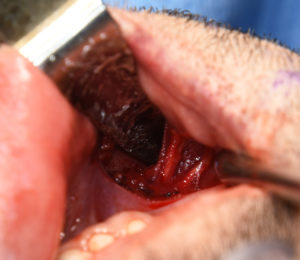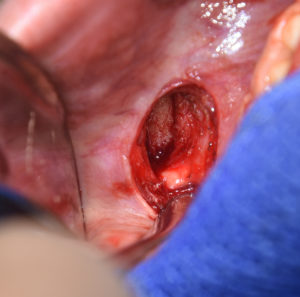Chin implants are the most common form of augmentation of the lower third of the face. Their use has been done for many decades and the implant design and materials to do so has evolved accordingly. Initially in the form of a soft small central implant placed into the soft tissue chin pad, chin implants have evolved into contemporary styles that sit on the bone and have long extended wings that go back further along the jawline.
While extended or anatomic chin implants provide a more effective augmentation that blends better into the surrounding jawline, they are not without complications. The wings of silicone chin implants are long and thin and run the risk of their ends folding over during placement…which is not detectable during surgery. Stiffer materials have thicker wings whose ends may become palpable or externally visible. Regardless of material composition these wings can end up too high or low even with a few degrees of central implant asymmetry…which becomes magnified at the back end of the more distal end of the wing.
When the wings of anatomic style chin implants have an aesthetic issue the traditional approach is to reposition/adjust the entire implant through the incision by which it was placed. And if the main body of the implant needs revision for its own reasons then this would be an appropriate approach.


Dr. Barry Eppley
Indianapolis, Indiana



